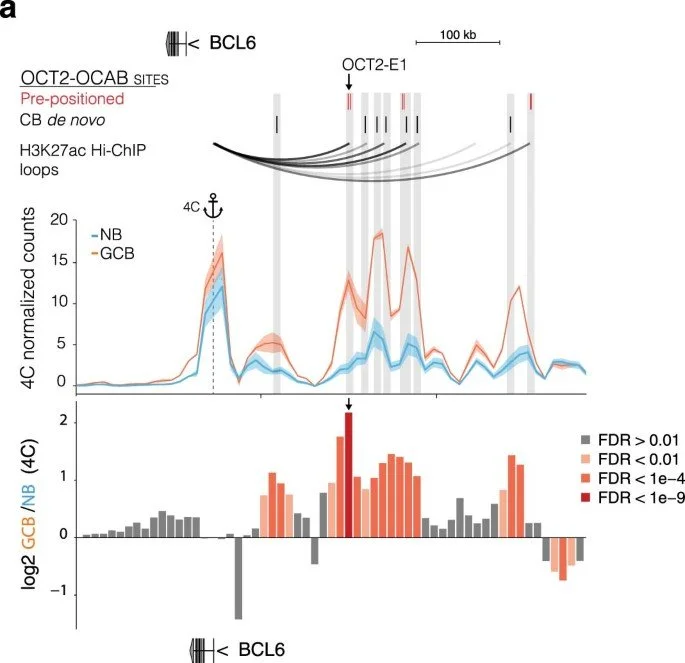OCT2 pre-positioning facilitates cell fate transition and chromatin architecture changes in humoral immunity
Doane, A. S., Chu, C. S., Di Giammartino, D. C., Rivas, M. A., Hellmuth, J. C., Jiang, Y., Yusufova, N., Alonso, A., Roeder, R. G., Apostolou, E., Melnick, A. M., & Elemento, O. (2021). OCT2 pre-positioning facilitates cell fate transition and chromatin architecture changes in humoral immunity. Nature immunology, 22(10), 1327–1340. https://doi.org/10.1038/s41590-021-01025-w
During the germinal center (GC) reaction, B cells undergo profound transcriptional, epigenetic and genomic architectural changes. How such changes are established remains unknown. Mapping chromatin accessibility during the humoral immune response, we show that OCT2 was the dominant transcription factor linked to differential accessibility of GC regulatory elements. Silent chromatin regions destined to become GC-specific super-enhancers (SEs) contained pre-positioned OCT2-binding sites in naive B cells (NBs). These preloaded SE 'seeds' featured spatial clustering of regulatory elements enriched in OCT2 DNA-binding motifs that became heavily loaded with OCT2 and its GC-specific coactivator OCAB in GC B cells (GCBs). SEs with high abundance of pre-positioned OCT2 binding preferentially formed long-range chromatin contacts in GCs, to support expression of GC-specifying factors. Gain in accessibility and architectural interactivity of these regions were dependent on recruitment of OCAB. Pre-positioning key regulators at SEs may represent a broadly used strategy for facilitating rapid cell fate transitions.
Journal: Nature Immunology PMID: 34556886 DOI: 10.1038/s41590-021-01025-w

